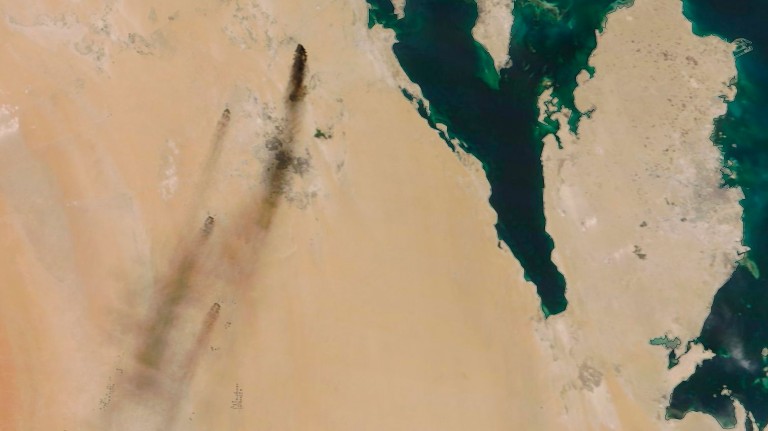An attack by 10 drones caused fires at a major oil processing facility and a nearby oil field in Saudi Arabia. Houthi rebels have claimed responsibility.
Direct hit: The drone attack on Saturday targeted Abqaiq, the world’s biggest oil processing facility, and the Khuaru oil field, which produces around one million barrels of crude oil a day. Saudi Aramco, the state-owned oil firm, said that around half of Saudi Arabia’s daily oil production had been suspended as a result, the WSJ reported.
The technology: Houthi rebels in Yemen have used drones for a number of attacks so far this year, including hitting a Saudi missile battery as well as other oil fields. In such attacks, the drones are typically packed with explosives and flown at speed into their targets. While the group used to use standard, off-the-shelf hobbyist drones with a limited range, later attacks have used more sophisticated models with an estimated range in excess of 900 miles, the UN reported in January.
Blame game: Immediately after the attacks, a spokesman for the Iran-backed Houthi group in Yemen claimed responsibility. Yahia Sarie said 10 drones had been launched and warned that more attacks would take place. On Twitter, US Secretary of State Mike Pompeo said there was no evidence the attack came from Yemen and instead blamed Iran directly. Iran has rejected the accusation.
The fallout: If it was them, the fact that the Houthis now have the ability to carry out such attacks could change the face of the Yemen war, which started in 2014. Drone attacks are extremely disruptive but cheap to carry out (these drones may have cost no more than $15,000 each, one expert told the New York Times) and incredibly hard to stop.
Sign up here for our daily newsletter The Download to get your dose of the latest must-read news from the world of emerging tech.

